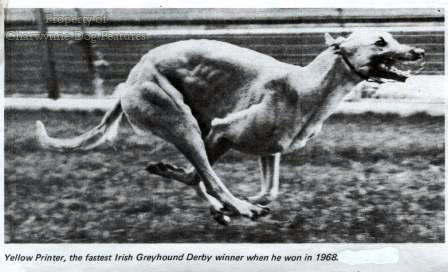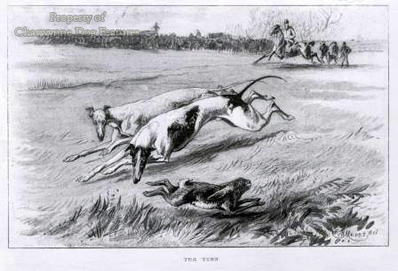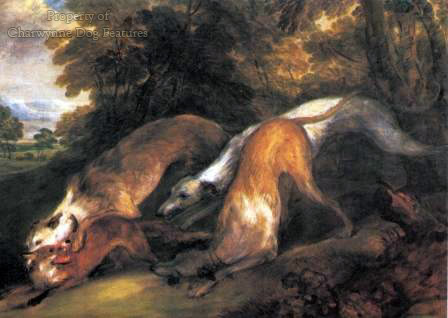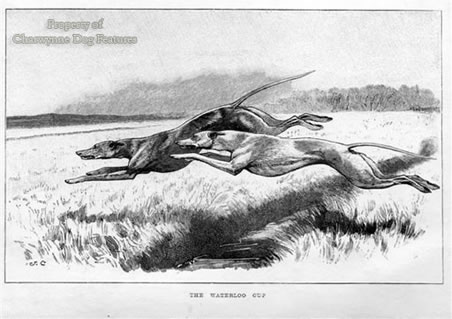777 SIGHTHOUND PSYCHOLOGY
SIGHTHOUND PSYCHOLOGY
by David Hancock
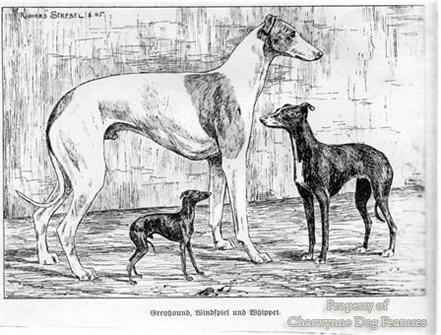
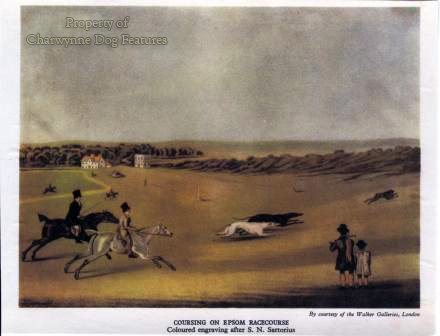
“The greyhound is said to be deficient in attachment to his master and in general intelligence. There is some truth in the imputation; but, in fact, the greyhound has, far less than even the hound, the opportunity of forming individual attachments, and no other exercise of the mind is required of him than to follow the game which starts up before him, and to catch it if he can. If, however, he is closely watched he will be found to have all the intellect that his situation requires.” 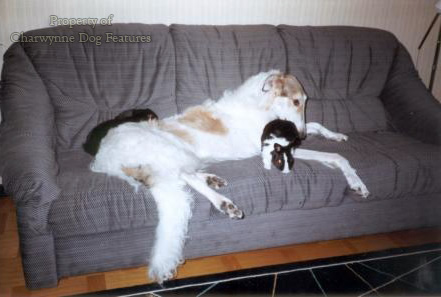
Those words are from William Youatt’s The Dog of 1854 and reflect the timeless view of many on the running dogs; those who know them well rate them, those knowing them only from afar misjudging them. And they can be aloof, withdrawn – away from the hunting grounds, undemonstrative and reserved. They will never have the vivacity of a Jack Russell or make the demands for affection of a spaniel. In many cases you have to earn their affection, rather than expect it.
In his book The Dog – Structure and Movement of 1970, RH Smythe, sportsman, vet and exhibitor, writes: “When galloping on a circular race track the fore limb nearest to the centre of the course takes the greater part of the weight and so becomes the leading leg. If by any reason the dog is thrown temporarily off its stride and changes legs, there will be a loss of speed and the winner is more often the dog that uses its brain to retain its balance and maintain the same type of gait throughout the race.” When you see a sighthound tearing round a track at flat-out speed, it is difficult to consider the racing dog using its brain, either to learn from experience or to adjust quickly to a split-second problem. But such a hound can so easily be underestimated; the great winners are often the brainiest dogs too. The hunting dog instincts work on the track as well.
 Many of these breeds are glamorous, like the Afghan Hound, physically beautiful, like the Saluki, aristocratic, like the Borzoi, and seemingly gentle-natured, like the Deerhound. But they were designed and then bred to hunt and kill, whatever their gentleness away from the hunting field. They are favoured by some because of their sheer handsomeness and I have no criticism of that. But I am concerned that such attractive breeds can end up being valued only for their looks and their spiritual needs overlooked. Their instinct to chase and catch other animals too needs to be acknowledged. There are dangers in overlooking the basic fact that sighthounds were selectively bred and specifically intended to kill small mammals. Instincts, however deeply buried, are still there. They need to be exercised but in a controlled way.
Many of these breeds are glamorous, like the Afghan Hound, physically beautiful, like the Saluki, aristocratic, like the Borzoi, and seemingly gentle-natured, like the Deerhound. But they were designed and then bred to hunt and kill, whatever their gentleness away from the hunting field. They are favoured by some because of their sheer handsomeness and I have no criticism of that. But I am concerned that such attractive breeds can end up being valued only for their looks and their spiritual needs overlooked. Their instinct to chase and catch other animals too needs to be acknowledged. There are dangers in overlooking the basic fact that sighthounds were selectively bred and specifically intended to kill small mammals. Instincts, however deeply buried, are still there. They need to be exercised but in a controlled way.
Being built for extreme speed, having exceptional eyesight, acute hearing and a good nose for air-scent, is all very well but if the hunting instinct is not there too you do not have a hound at all. In his book The Mind of the Dog RH Smythe, vet, exhibitor and sportsman, writes “ Much of the work carried out by dogs, whether it be chasing the live or dummy hare, hunting and tracking and so on, is really natural behaviour adapted to certain ends…One can only marvel at the instinct which compels a pack of greyhounds to chase a mechanical hare several times a week with no hope of ever catching it.” When dog’s natural behaviour is harnessed by man, it is reinforced by dog’s equally natural desire to please its human owner; training a member of the speedster breeds, however, is not a recommended task for a new dog owner. Dog breeds are often selected by their future owners because of their appearance; this leads to mis-matches. Owners must always be aware of the reason their potential purchase came into being – what they were for.
 As Stanley Coren points out in his The Intelligence of Dogs of 1994 (Headline Book Publishing): “Sighthounds, for example, will chase things that move. This means that attempting to work or train your greyhound, whippet, saluki, or Afghan hound in a busy area, such as a park where children and other dogs will be running around, will simply make the task more difficult. If you must train outdoors, use a relatively empty field or yard…you can take advantage of these breeds’ responsiveness to visual stimuli by using large and exaggerated hand signals during training rather than simply depending upon voice commands.” In his forthright Secrets of Dog Training of 1992 (Robinson), Brian Plummer, who knew a thing or two about the use of hunting dogs wrote: “Sight hounds usually respond to commands with infuriating slowness despite the fact that when they so choose they can galvanise into action with an astonishing and often quite terrifying speed…All Middle Eastern greyhound types are singularly resistant to formal conventional training” – putting this down to a ‘rather remote disposition’. All hound breeds need a certain independence of mind as well as immense determination in order to perform their allotted task at all. This demands both a measure of control by the owner but also a recognition that the dog’s natural instincts need to be exercised.
As Stanley Coren points out in his The Intelligence of Dogs of 1994 (Headline Book Publishing): “Sighthounds, for example, will chase things that move. This means that attempting to work or train your greyhound, whippet, saluki, or Afghan hound in a busy area, such as a park where children and other dogs will be running around, will simply make the task more difficult. If you must train outdoors, use a relatively empty field or yard…you can take advantage of these breeds’ responsiveness to visual stimuli by using large and exaggerated hand signals during training rather than simply depending upon voice commands.” In his forthright Secrets of Dog Training of 1992 (Robinson), Brian Plummer, who knew a thing or two about the use of hunting dogs wrote: “Sight hounds usually respond to commands with infuriating slowness despite the fact that when they so choose they can galvanise into action with an astonishing and often quite terrifying speed…All Middle Eastern greyhound types are singularly resistant to formal conventional training” – putting this down to a ‘rather remote disposition’. All hound breeds need a certain independence of mind as well as immense determination in order to perform their allotted task at all. This demands both a measure of control by the owner but also a recognition that the dog’s natural instincts need to be exercised.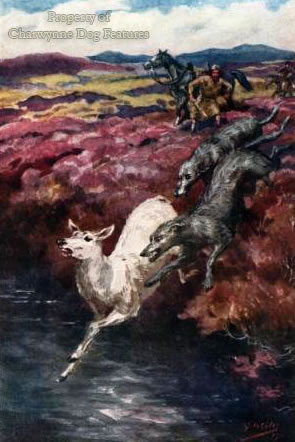
Writing in The Countryman’s Weekly of 7 Sept 2011, lurcher expert Penny Taylor gave the view that: “ The ‘shape’ or ‘wiring’ in a dog’s brain is something inherited through hundreds of years’ breeding for a particular function and we must never forget the original purpose of our dogs if we are to succeed in training them. Some people say that the Saluki-type is untrainable but nothing could be further from the truth. You can’t apply ‘conventional’ training methods to a dog which was never bred for trainability in the first place and you need to think outside the conventional training box to engage these dogs on your terms.” There is an awful lot of sense in this approach to sighthound training. Equally perceptively, a fellow lurcher expert, Jackie Drakeford, wrote in the same issue: “…we may have a Deerhound stage where the pup may be a shy feeder, a clumsy great lout and not a great thinker; through a Saluki stage where the Deerhoundy cooperation is lost and a sensitive, stubborn, independent solver of problems emerges; to a Bedlington stage where fire and no reverse gear take over from the Saluki careful consideration of everything before acting; and a collie stage of hypersensitivity, cringing and refusing to leave your side…” It is so important with sighthounds to know your breed or the contributing ingredients in your hybrid. 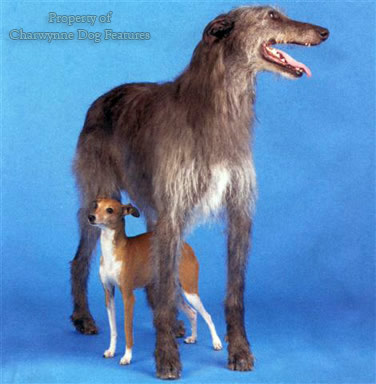
In their account of the first London greyhound track meeting, The Times of June the 21st 1927, reported: “The card consisted of eight races. The finishes, perhaps, were not quite so close as usual, but cleverness and experience told nearly every time, and the keenness and gameness of the dogs were indicated, first, by their howling and pawing at the doors of the starting box and, then, by their refusal to give in so long as a breath of wind remained to them. Trainers already tell stories of the older dogs’ hatred of being beaten by another dog – a hatred that far transcends the desire for the mechanical hare’s blood.” It is unwise to underestimate the powerful instincts of the sighthounds, especially their eagerness to run after a moving quarry and, most unwise to under-rate the sheer competitiveness of the speedsters. However aloof their demeanour, however gracious their movement and however reserved in nature, these dogs are ‘hot-wired’ to run and to win!
